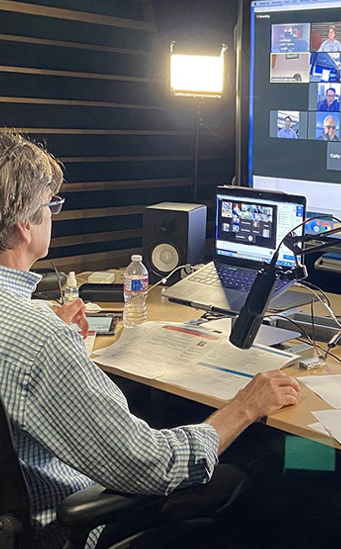Everyone, everywhere can now receive the same training. Welcome to the ‘Hybrid – room and zoom’ training delivery option – where you have some of your staff attend in person and others join in via an online meeting platform (eg. Zoom or Microsoft Teams)
This option removes the need to have all participants in the same location, reducing cost and hours spent on logistics. All you need to ensure the ‘Hybrid – room and zoom’ is a success is to have the following setup (or hire a preferred PD Training venue that is already set up for Hybrid).
To facilitate this style of training delivery, we have learned some important lessons related to the best practice technology and equipment required to provide the best experience for the participants as per outlined below:
Preferred Scenario – In a preferred classroom setup we would have the following equipment:
Minimum Scenario – The minimum setup would have the following equipment:

Absolutely loved it! It was my first experience using hybrid. Trainer Joe always included, referred and looked at me – I felt included the whole time. I got so much out of it and woke up every day excited to logon.
3 day Train the Trainer Course
The hybrid training worked well and the trainer was good at including everyone and the person on zoom. It helped that the person on zoom was lively and interactive.
Dialing into to a live class was a better experience than I expected.
First of all, let’s understand that not every face to face trainer has the makings of a good Hybrid trainer. Also, not all good virtual trainers are good Hybrid trainers either.
A Hybrid trainer is a blend of an excellent virtual trainer with an excellent face to face trainer and not everyone can be both. They are a rare breed and at PD Training we continue to train and hone the skills of our selected Hybrid Trainers.
So what makes a good hybrid trainer?
PD Training have been delivering Hybrid workshops for the last 6 years, and we feel we’re become rather good at it.


Supporting leaders and teams around the globe, we're proud to mark 15 years of growth, innovation, and success. Thank you for being part of the PD Training journey. The future is looking bright!